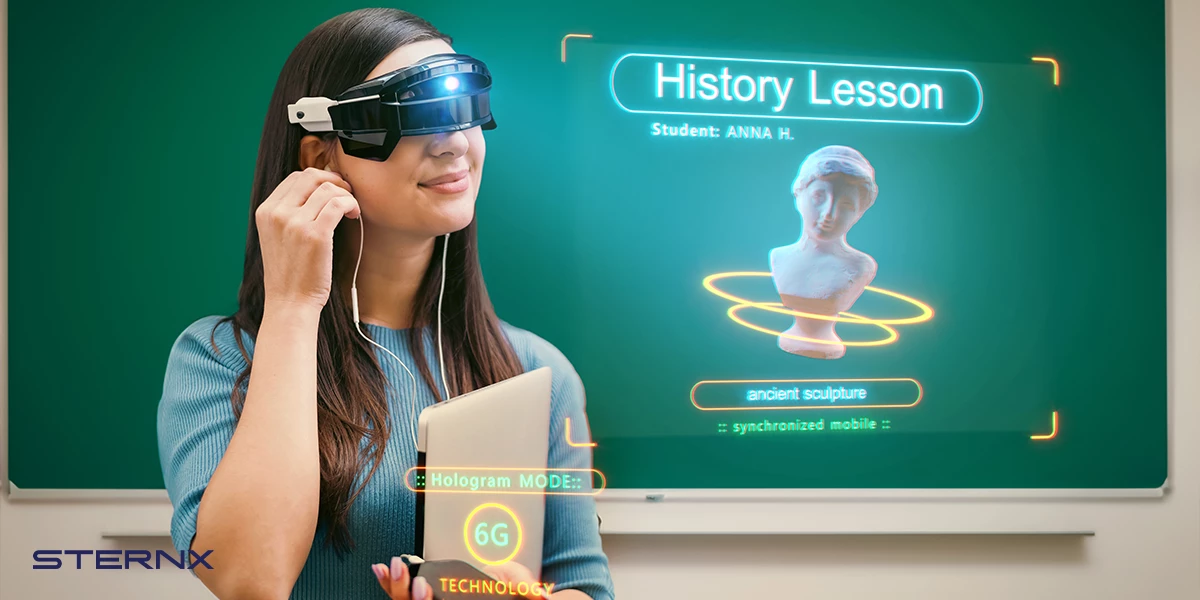Table of Contents
The COVID-19 pandemic ushered in a new era of remote and digital learning that has catalyzed innovation in education technology. While online learning has been around for decades, the pandemic necessitated a rapid shift to virtual classrooms. This disruption has paved the way for reimagining and redesigning the classroom experience using technology. As schools reopen and embrace hybrid models, digital tools provide tremendous opportunities to personalize education and enrich how students learn both inside and outside the physical classroom.
The Rise of Edtech
The global edtech market was valued at $85.8 billion in 2022. With the digital classroom transformation underway across the globe, some projections estimate the market size could grow to $325 billion by 2028. This boom reflects surging investment and innovation in educational products and platforms that facilitate online learning, skill development, assessments, and administration. From video conferencing apps to AI tutors, the range of available edtech continues to expand rapidly.
A Blended Model is Best
While some advocated for a complete switch, studies show that blended models balancing physical and online instruction benefit students more holistically. According to research, engagement and motivation are much higher for students who still have in-person interactions with teachers and peers. Completely virtual environments can feel isolating and overwhelming for both students and educators. With a blended framework, schools can optimize digital tools while retaining the interpersonal aspects vital for development and success.

Key Areas of Innovation In Digital Classroom
Several key technologies are driving the digital classroom revolution by enhancing how teachers provide instruction and how students access information, collaborate, and demonstrate learning.
- Personalized Learning Platforms: Software systems like Summit Learning Platform facilitate differentiated instruction by creating custom playlists of activities and assessments for each student based on their progress and goals. Teachers can target instruction efficiently without having to create completely individual lesson plans.
- Immersive Media: Augmented and virtual reality tools are making content interactive and hands-on learning more accessible. Students can engage with 3D visuals, conduct virtual science experiments, or go on immersive history journeys. Access to experiences that were previously impossible or expensive can expand engagement and conceptual understanding, especially for visual and kinesthetic learners.
- AI Assistants: From automated essay scoring to providing feedback, AI in education has incredible potential to support educators. Assistants like Jill Watson created by Georgia Tech answer students’ questions, freeing up instructors to focus on higher value tasks. As the technology improves, AI could help teachers personalize and enhance curriculums.
- Real-Time Data Analytics: Admin panels give educators invaluable insights into overall student progress and engagement, highlighting areas needing improvement. Analytics can catch issues from students at risk of failing to comprehension gaps around key concepts. Teachers can address problem areas with students individually or adjust lesson plans accordingly.
- Collaboration Apps: Whether discussion boards, shared document editing, chat functions, or video breakout groups, digital tools make collaborating seamlessly part of classroom workflows. Students can engage in project-based learning and peer-to-peer teaching – leading to better educational outcomes and life skills development.
Addressing the Digital Divide
For the digital classroom transformation to bridge equity gaps, countries must address the digital divide exacerbated by the pandemic. UNICEF estimates that at least a third of the world’s schoolchildren lacked access to remote learning during school closures. The divide disproportionately impacts girls, students of lower socioeconomic status, and children in rural areas. Bridging this divide requires substantial investment in infrastructure, hardware, connectivity, and educator training – especially in the developing world. Successfully integrating technology necessitates overcoming socioeconomic barriers to access. More affordable devices, subsidy programs, and public-private partnerships can help dismantle barriers.
Preparing Students and Teachers For Digital Classroom Revolution
Merely providing devices and software is insufficient: students and educators need support in adopting technology. Teachers require extensive training for managing digital classrooms, monitoring student progress, utilizing data, and implementing new instructional strategies. Leadership development for principals and administrators ensures they can guide digital transformations too. For students, schools should teach digital literacy equipping them to use tools responsibly. Instruction on topics like online safety, privacy, ethical tech usage, and media literacy is essential.
Designing technology to boost student engagement and motivation is also key alongside user-centric tools. Ensuring a user-friendly experience prevents frustration and drop-offs in usage. Adequately preparing end-users – both students and staff – accelerates digital adoption and eases growing pains from new systems.
Reimagining Assessment
A major promise of edtech is reinventing how students are assessed. Traditional standardized testing has drawn criticism for inadequately or inequitable evaluating abilities. Digital tools allow for more continuous, interactive, and well-rounded methods. Students can complete online quizzes validating comprehension. Immersive simulations can quantify hard skills application. AI scoring can analyze written Arguments more objectively.
Developing robust digital credentialing, portfolios of projects, and skills-based assessments better represents what students know and can do. These modern evaluation methods tie into the workforce needs of our increasingly digital economy too. Rethinking assessment parallels the transformation of instruction itself.

The Future of Education In Digital Classroom
Digital classrooms provide a gateway to reimagining every aspect of learning – from content delivery and knowledge assessment to collaboration and critical thinking development. Still in the early phases, most digital learning thus far has replicated analog methods online rather than enabling entirely new paradigms. As artificial intelligence, extended reality, and other exponential technologies mature, we will see even more radical reinvention of educational experiences.
The pandemic era migration online will permanently reshape primary and secondary schooling thanks to digital tools increasing personalization, access, engagement, and outcomes. However, successful integration hinges on overcoming unequal access while providing exceptional learning experiences that augment student development. Digital classrooms have the potential to either exacerbate or reduce educational divides worldwide. Achieving more equitable, enriching, and effective learning opportunities requires carefully incorporating technology and constantly evaluating its impact on students. But if implemented thoughtfully, edtech can transform classrooms into centers of innovation that equip youth with the skills to thrive in tomorrow’s world.
